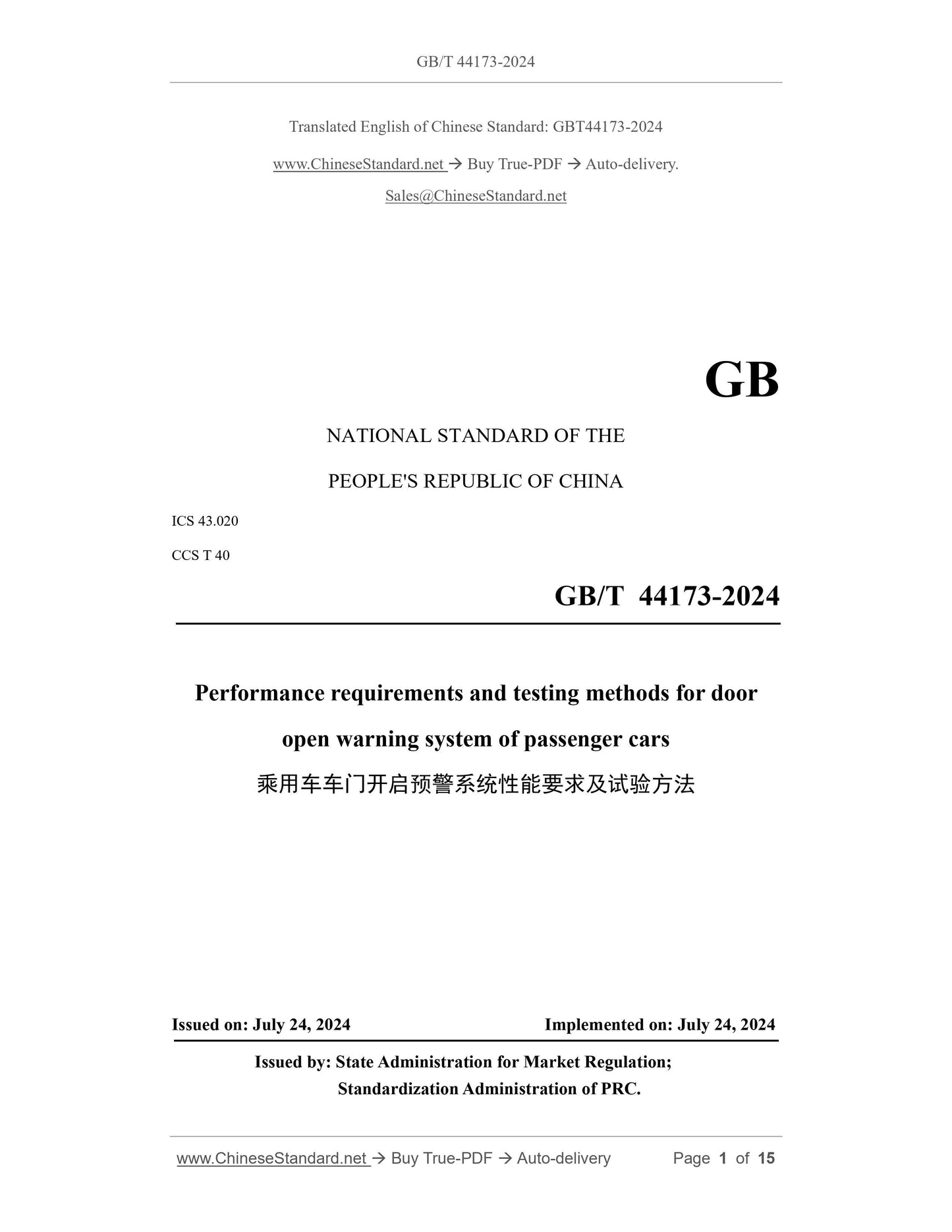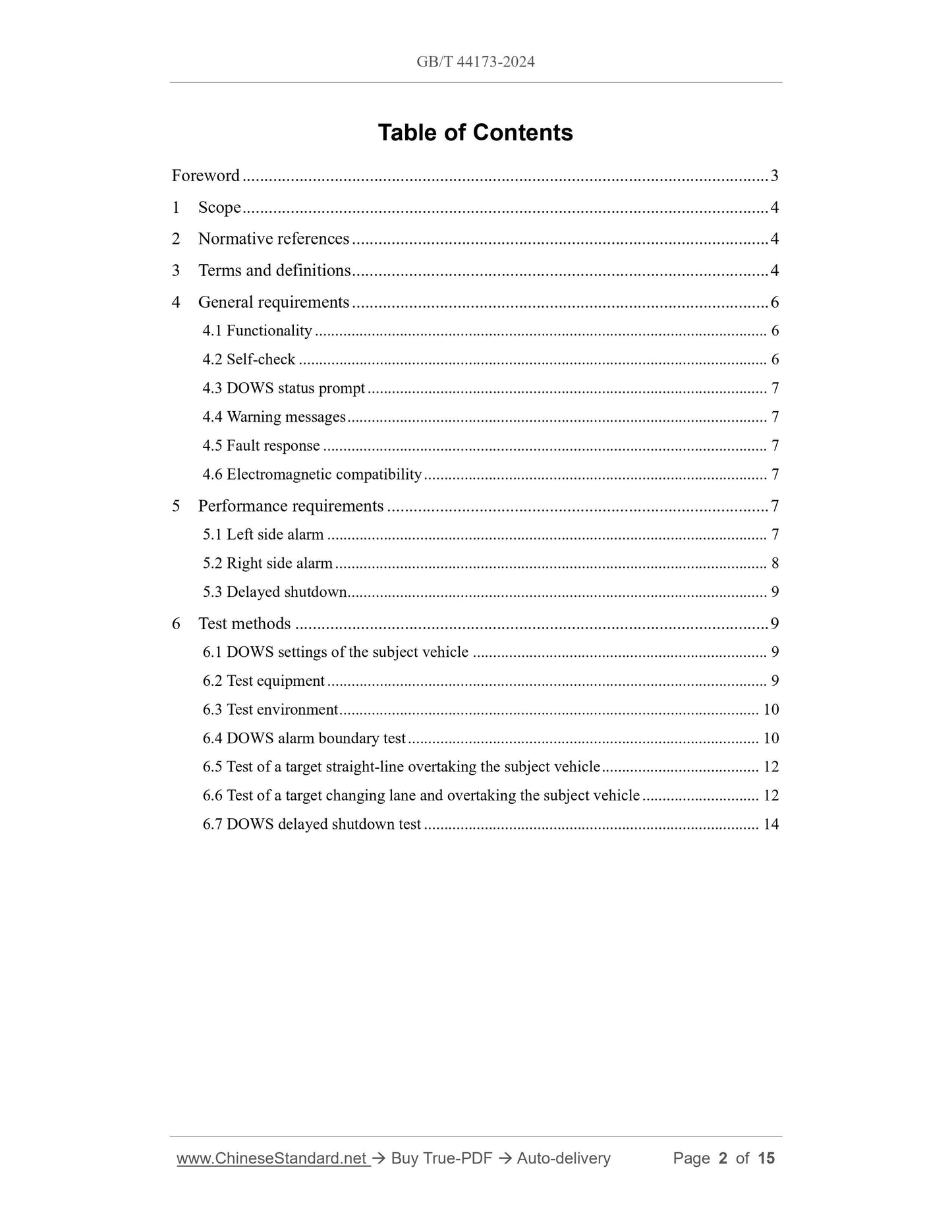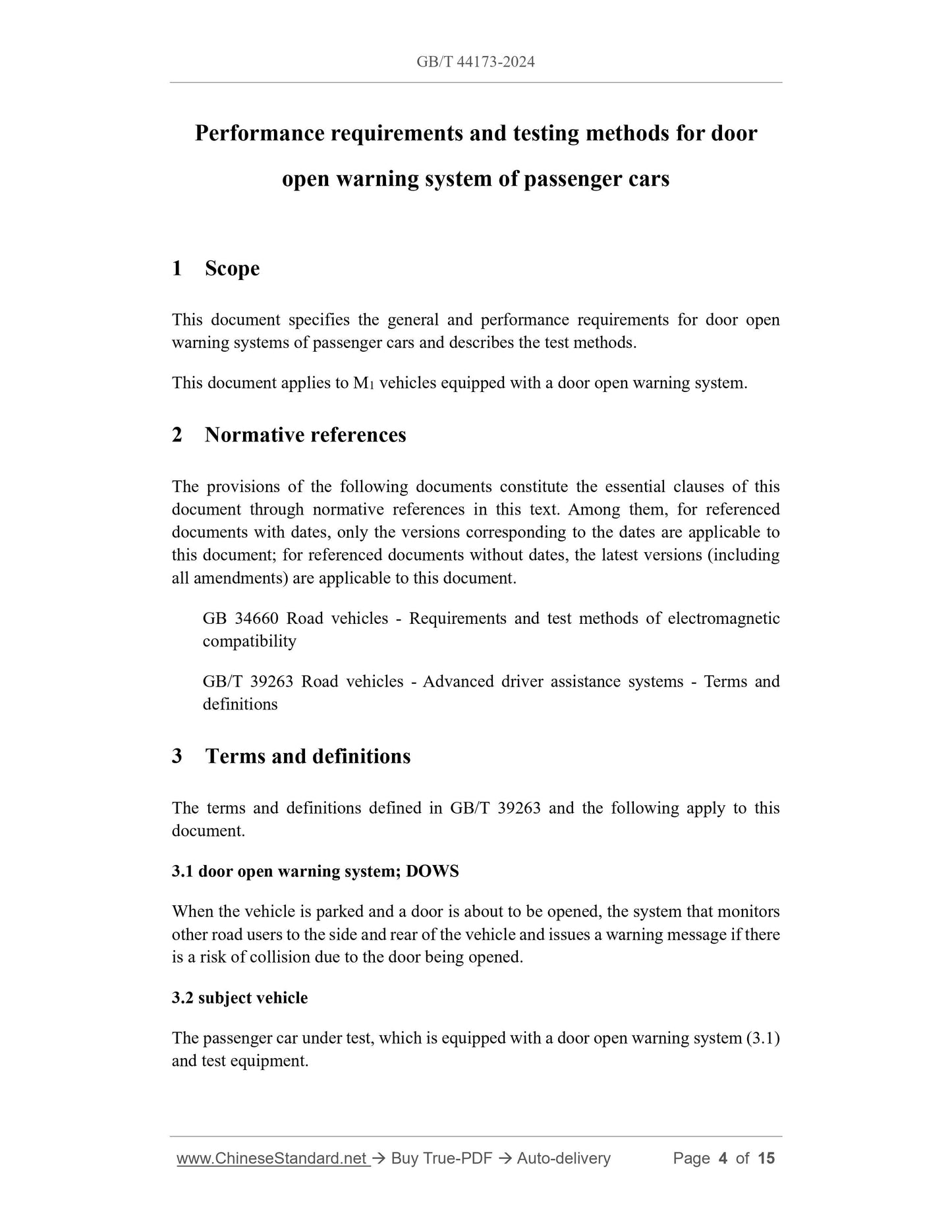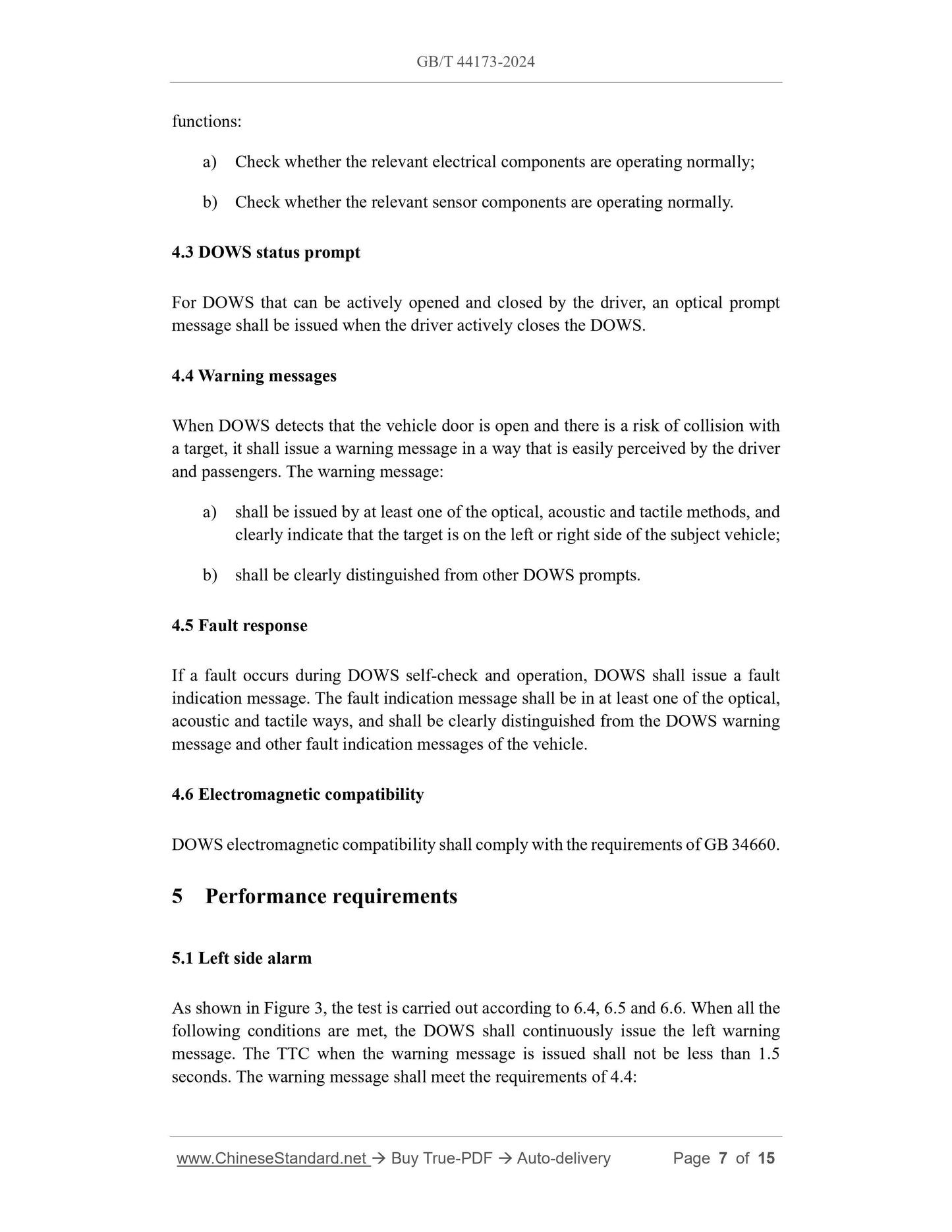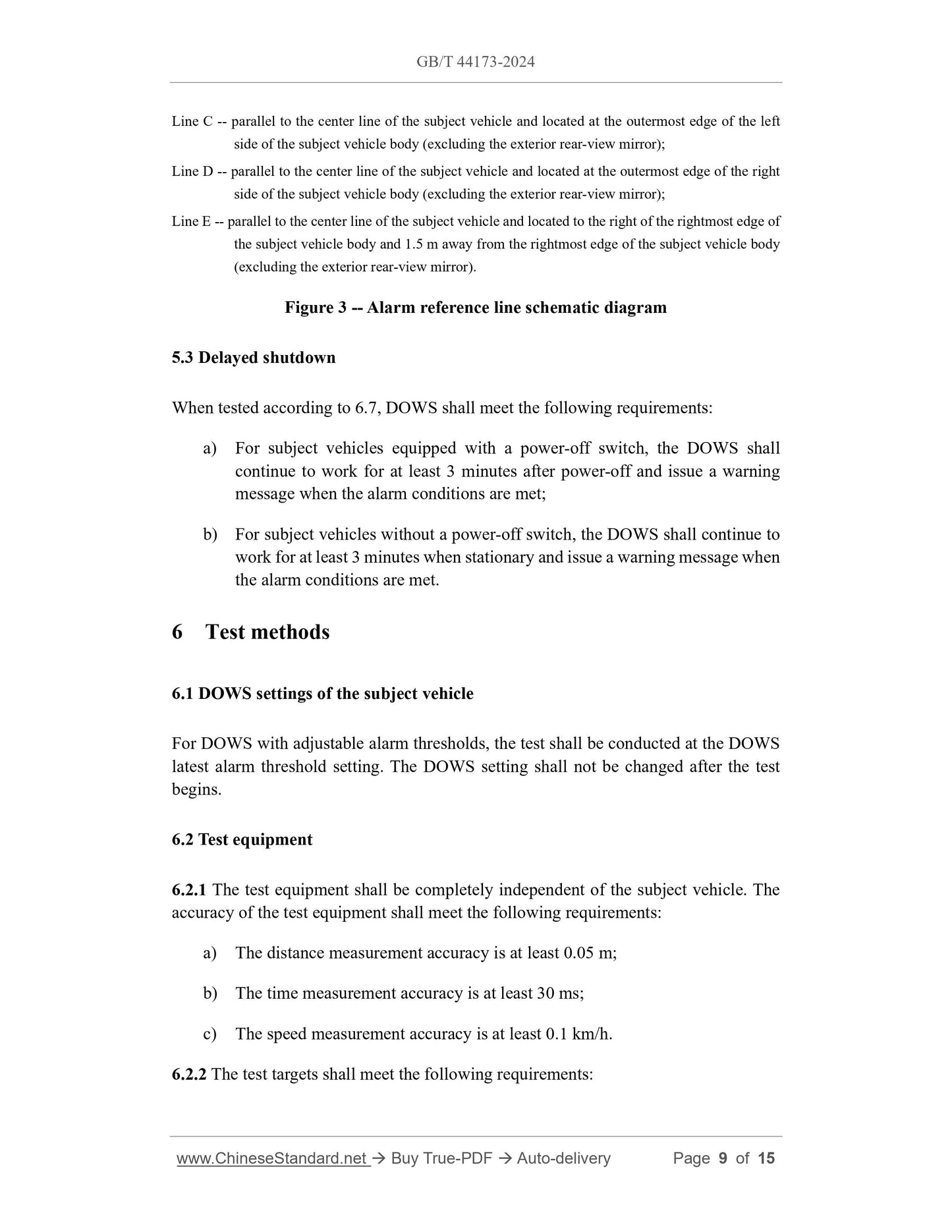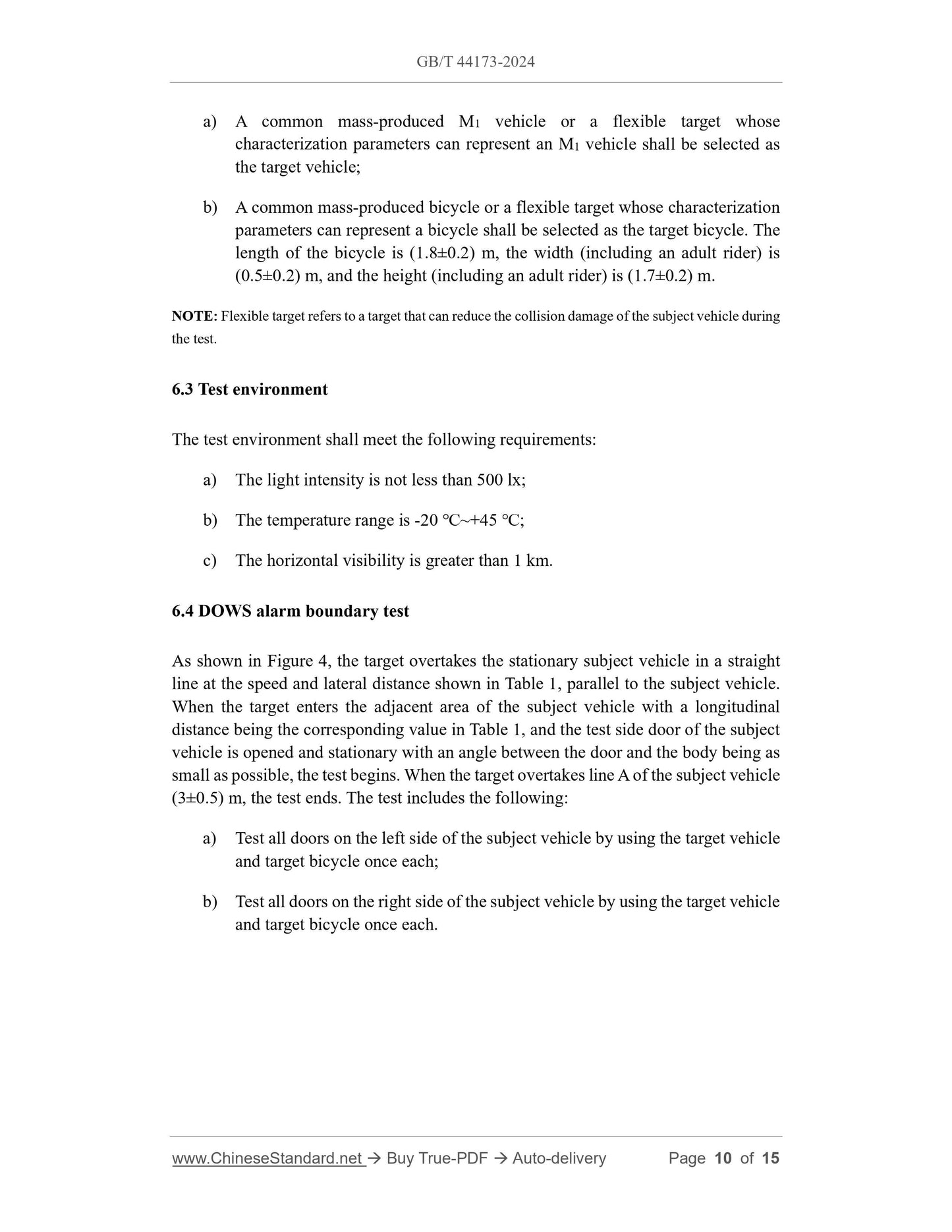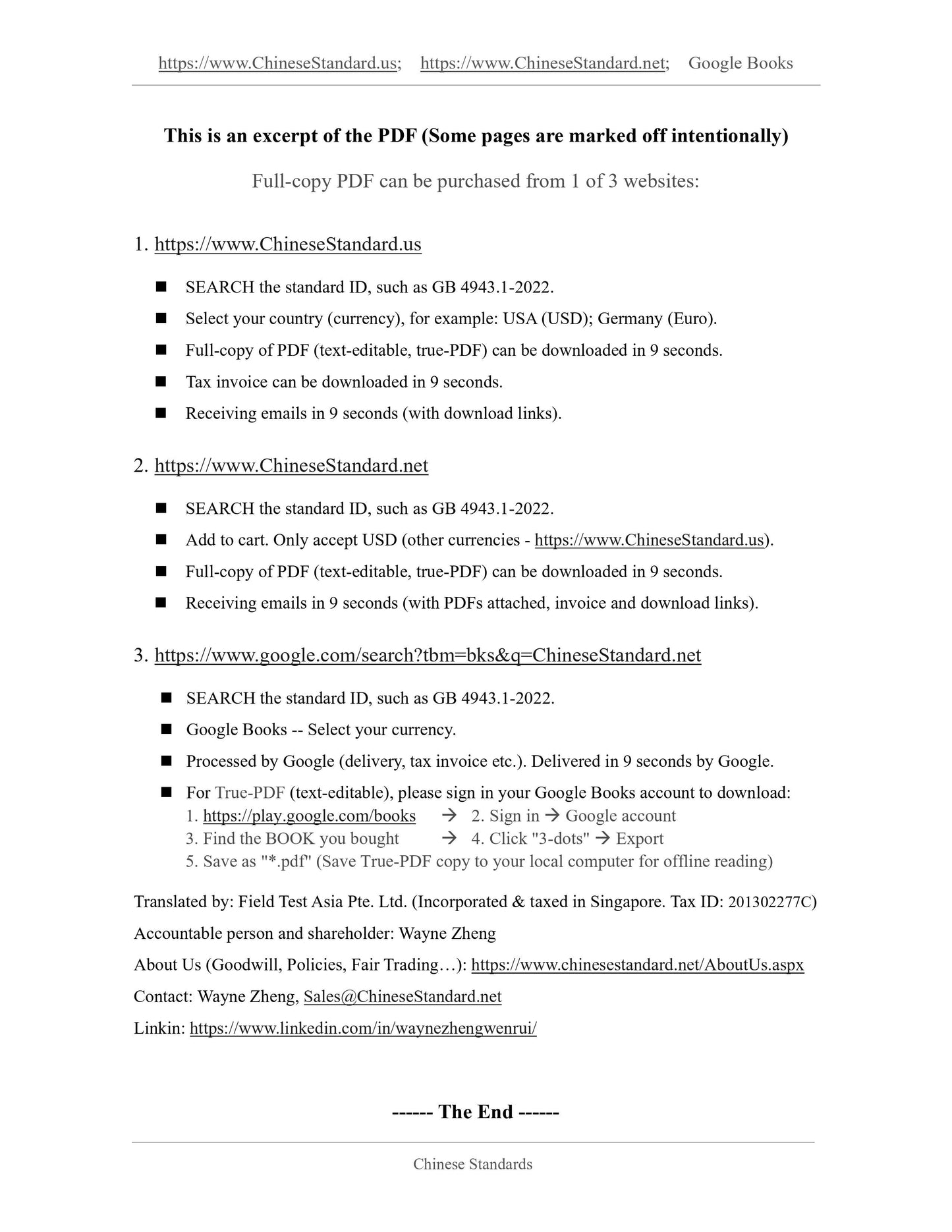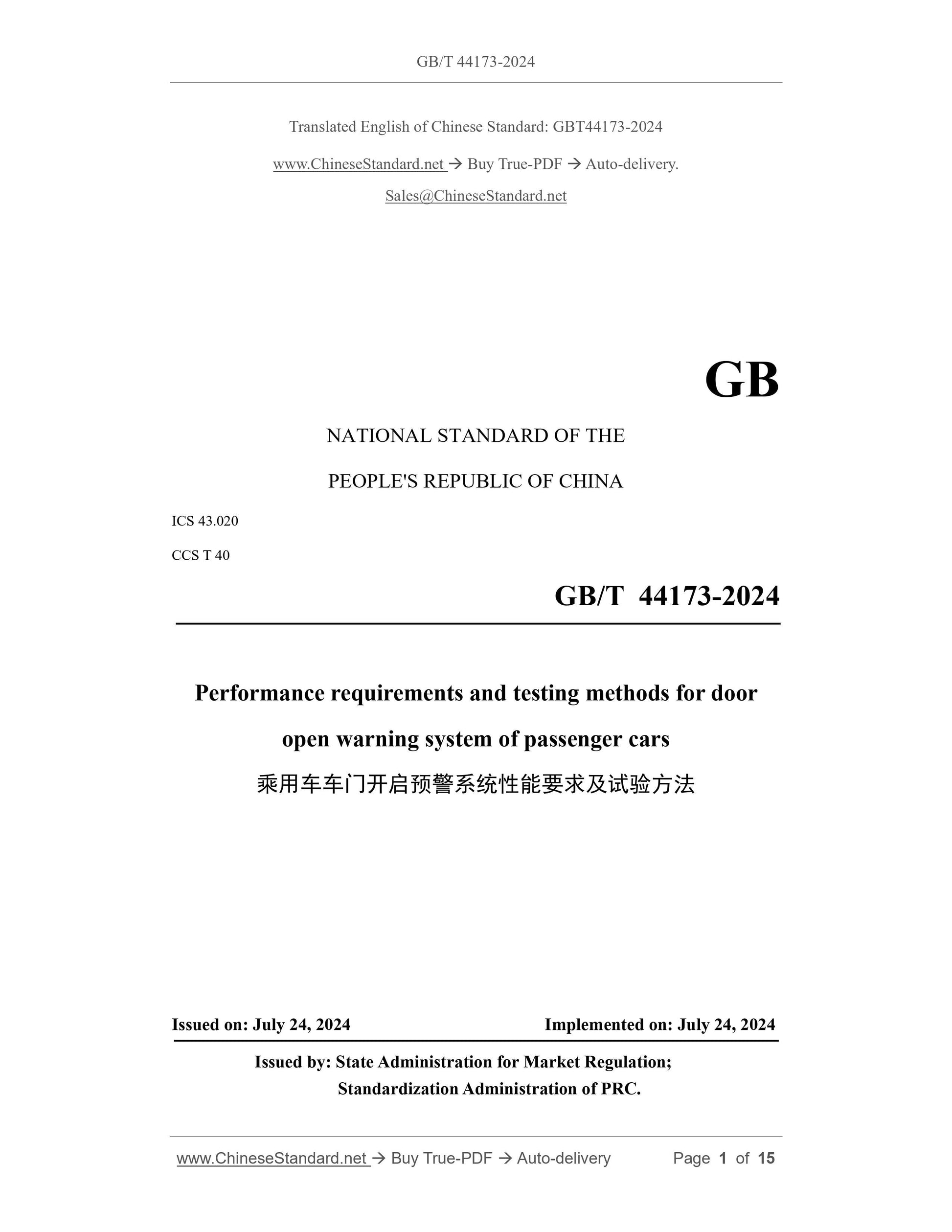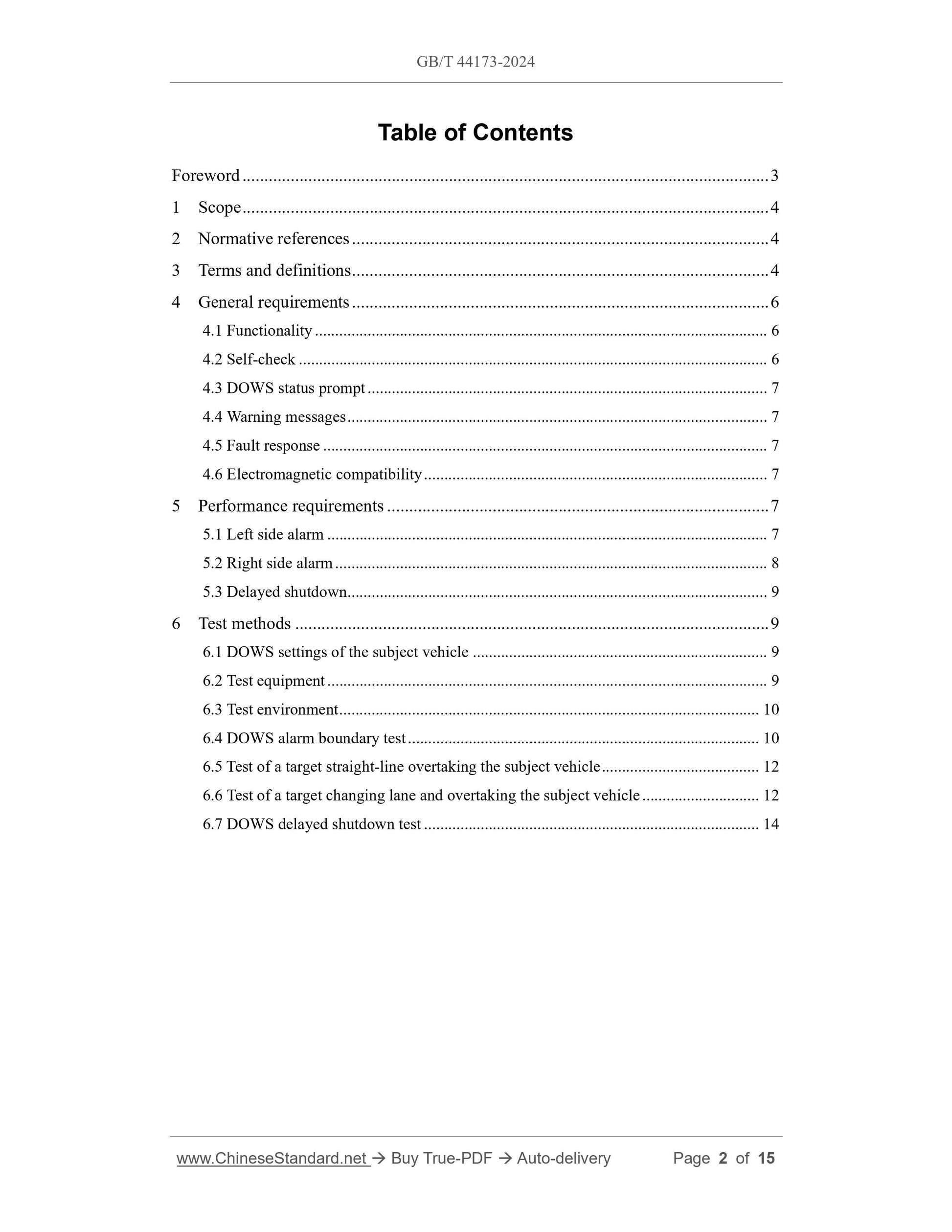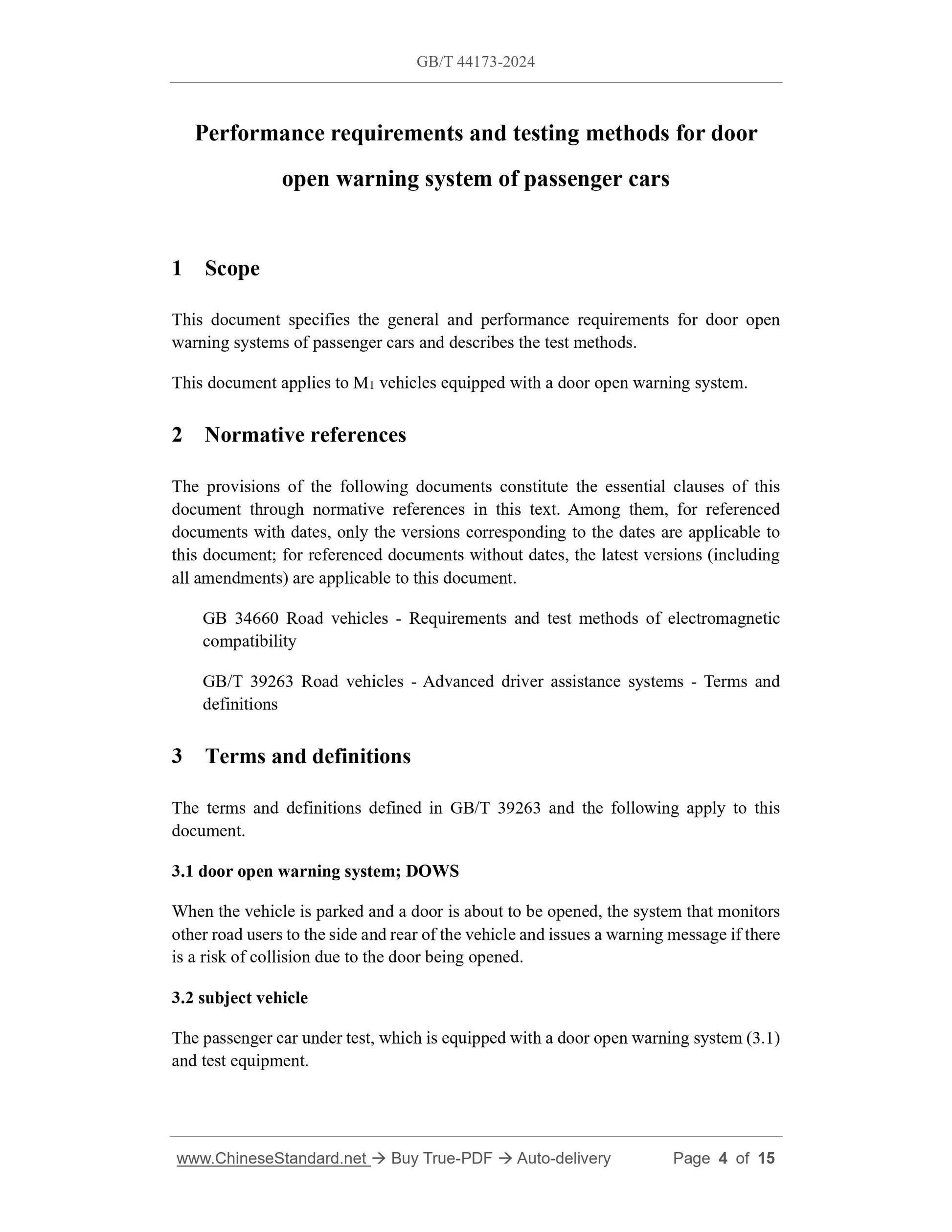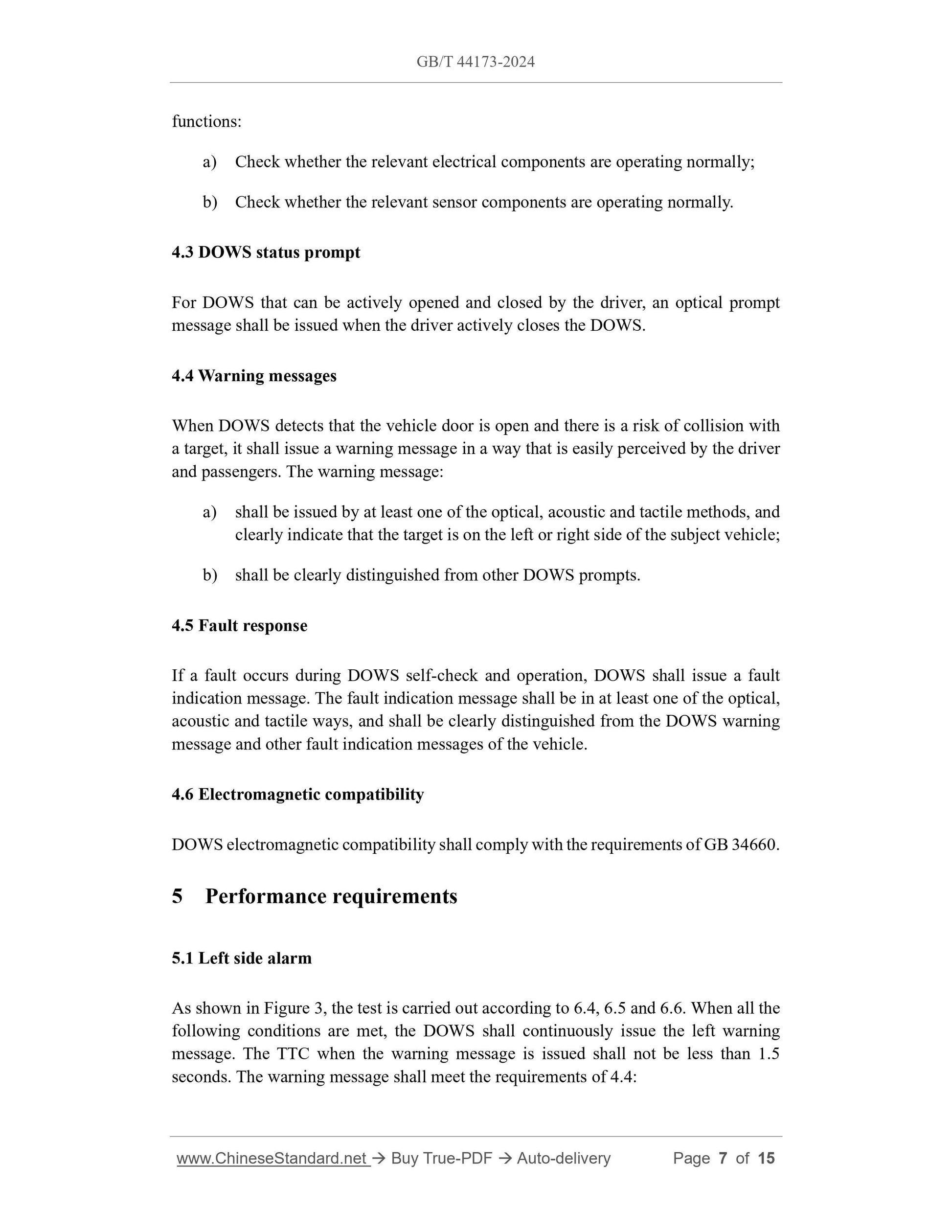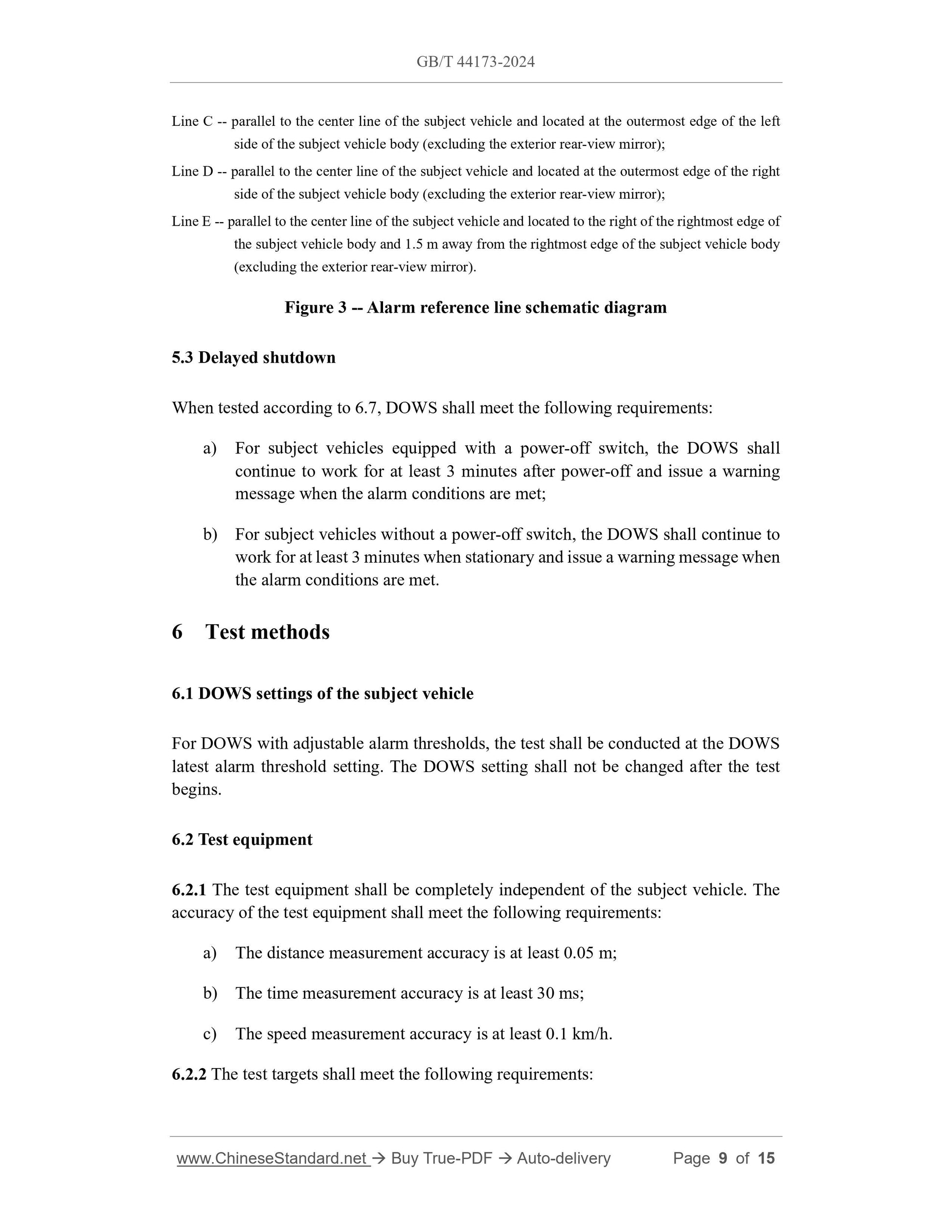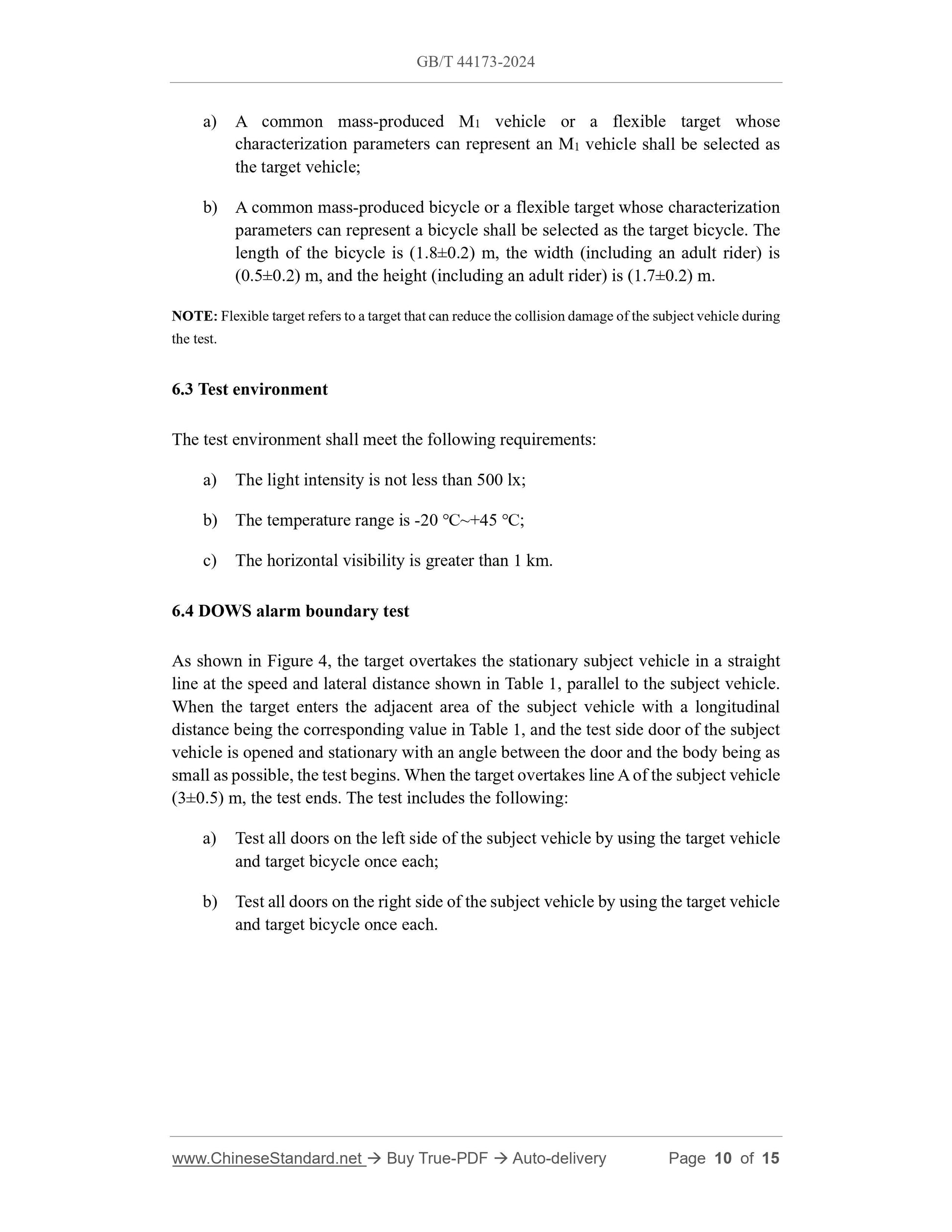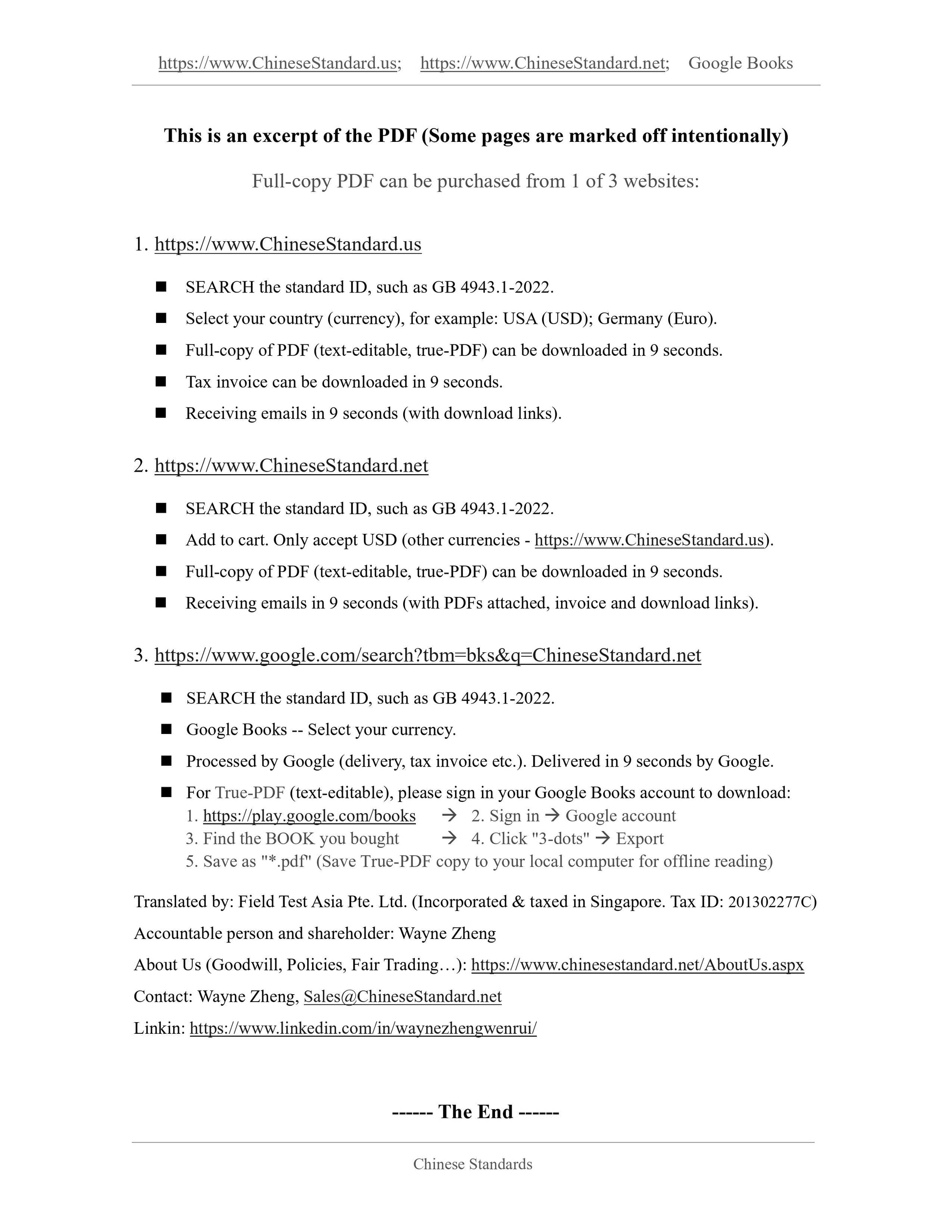1
/
of
7
www.ChineseStandard.us -- Field Test Asia Pte. Ltd.
GB/T 44173-2024 English PDF (GB/T44173-2024)
GB/T 44173-2024 English PDF (GB/T44173-2024)
Regular price
$275.00
Regular price
Sale price
$275.00
Unit price
/
per
Shipping calculated at checkout.
Couldn't load pickup availability
GB/T 44173-2024: Performance requirements and testing methods for door open warning system of passenger cars
Delivery: 9 seconds. Download (and Email) true-PDF + Invoice.Get Quotation: Click GB/T 44173-2024 (Self-service in 1-minute)
Newer / historical versions: GB/T 44173-2024
Preview True-PDF
Scope
This document specifies the general and performance requirements for door openwarning systems of passenger cars and describes the test methods.
This document applies to M1 vehicles equipped with a door open warning system.
Basic Data
| Standard ID | GB/T 44173-2024 (GB/T44173-2024) |
| Description (Translated English) | Performance requirements and testing methods for door open warning system of passenger cars |
| Sector / Industry | National Standard (Recommended) |
| Classification of Chinese Standard | T40 |
| Classification of International Standard | 43.020 |
| Word Count Estimation | 14,147 |
| Date of Issue | 2024-07-24 |
| Date of Implementation | 2024-07-24 |
| Issuing agency(ies) | State Administration for Market Regulation, China National Standardization Administration |
Share
